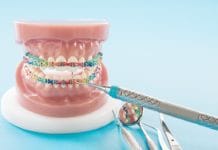Periodontitis and dental caries are the most common chronic oral diseases affecting humans worldwide. Though periodontitis and dental caries share some common risk factors and social determinants, it is a common clinical finding that severe forms of either disease specifically affect different individuals. This may be due to specific microbial signatures within each disease’s dental-associated biofilm.1
The relationship between dental caries and periodontitis has been mildly explored, however, the results remain controversial. In a systematic review and meta-analyses, the authors aimed to answer the following questions: “In human adults, do subjects suffering from periodontitis have a higher presence of untreated carious lesions and caries experience than subjects not suffering from periodontitis?”1
The Study
Observational studies that met specific inclusion criteria established to answer the proposed questions were utilized. A total of 18 studies on 21 cohorts involving 135,018 participants were included.1
Inclusion criteria for the systematic review and meta-analysis included subjects > 18 years of age, presence of periodontitis, absence of periodontitis (control group), presence of untreated carious lesions, and caries experience, with cross-sectional study designs.1
The Results
Previously published epidemiological evidence indicated that periodontitis and dental caries co-occur due to common risk factors, including lack of access to dental care, socioeconomic factors, smoking, lack of proper oral hygiene, and increased consumption of fermentable carbohydrates. However, the results of the meta-analysis after adjustments only partially confirmed this concept.1
Although other confounders cannot be ruled out, the results suggest an independent association between periodontitis and dental caries. The authors speculate that periodontitis causes clinical attachment loss, leading to recession and increased tooth surface area, specifically root surfaces. Considering root surfaces are more susceptible to dental caries, the increased clinical attachment loss confers a higher risk for root caries.1
Indeed, a subgroup meta-analysis based on caries location revealed that the association is predominantly evident for root caries as opposed to coronal caries.1
It remains unclear whether this association changes following surgical or non-surgical periodontal therapy or if it is influenced by whether clinical attachment loss due to periodontitis impacts the supragingival (recession) or subgingival (increased pocket depth) environment. Specifically, root surfaces exposed to a subgingival microenvironment may be colonized by an anaerobic proteolytic biofilm rather than the acidogenic flora typical of dental caries, potentially affecting the observed associations. Additionally, it is still unknown whether there is an association with dental caries for gingival recessions not related to periodontitis.1
Several limitations must be considered when interpreting the results of this systematic review. Only three out of the 21 included cohorts were deemed to have a low risk of bias, mainly due to issues related to the assessment of periodontitis. Although periodontal status was consistently clinically or radiographically verified, eight cohorts used partial-mouth examination protocols.1
Additionally, none of the studies categorized the severity of dental caries, hindering the ability to distinguish whether severe forms of dental caries and periodontitis specifically affect different individuals. Moreover, despite subgroup analyses suggesting that model adjustments had minimal impact on association estimates, there remains a potential risk of confounding bias from common risk factors in some meta-analyses.1
Conclusion
Periodontitis has been associated with the presence and quantity of both treated and untreated root carious lesions. Nonetheless, these findings should be interpreted with caution due to the low association estimates and some limitations in the systematic review and meta-analysis, particularly the moderate to high risk of bias in the majority of the included studies and the significant heterogeneity observed in most meta-analyses.1
Clinicians should consider adopting caries-specific preventive measures for patients with periodontitis and clinical attachment loss that exposes root surfaces. This may involve using prescription fluoride toothpaste, professional fluoride varnish applications to root surfaces, practicing diligent oral hygiene, and managing dietary habits.1
Before you leave, check out the Today’s RDH self-study CE courses. All courses are peer-reviewed and non-sponsored to focus solely on high-quality education. Click here now.
Listen to the Today’s RDH Dental Hygiene Podcast Below:
Reference
- Romandini, P., Marruganti, C., Romandini, W.G., et al. Are Periodontitis and Dental Caries Associated? A Systematic Review With Meta-Analyses. J Clin Periodontol. 2024; 51(2): 145-157. https://onlinelibrary.wiley.com/doi/10.1111/jcpe.13910














